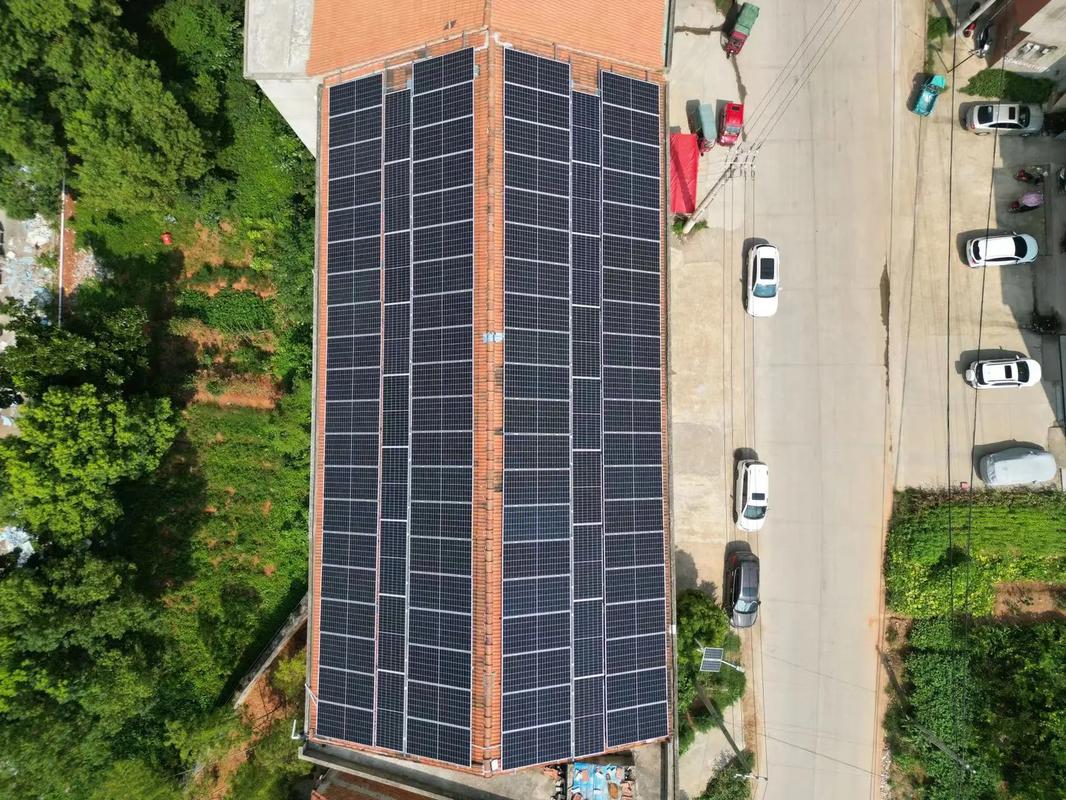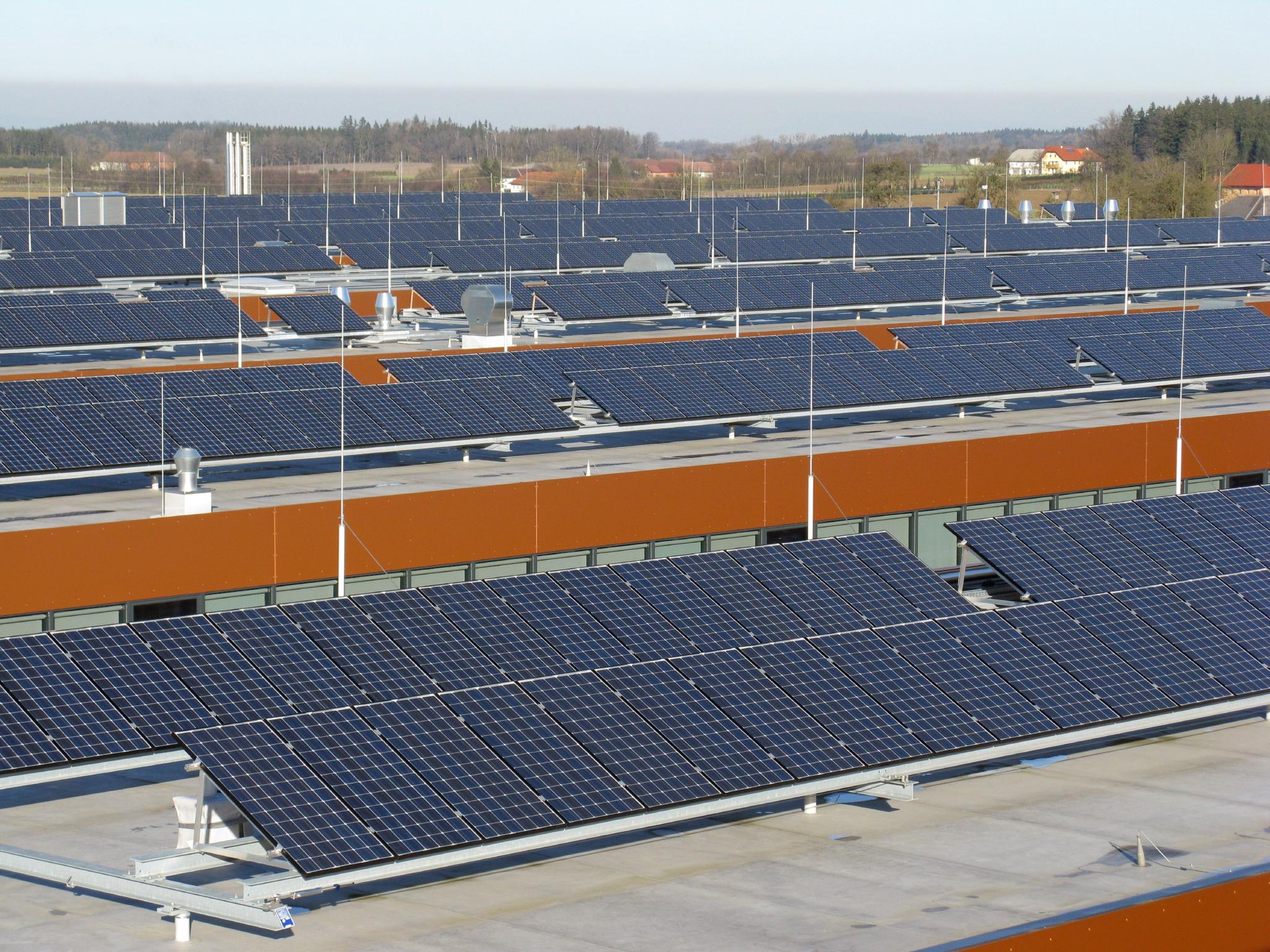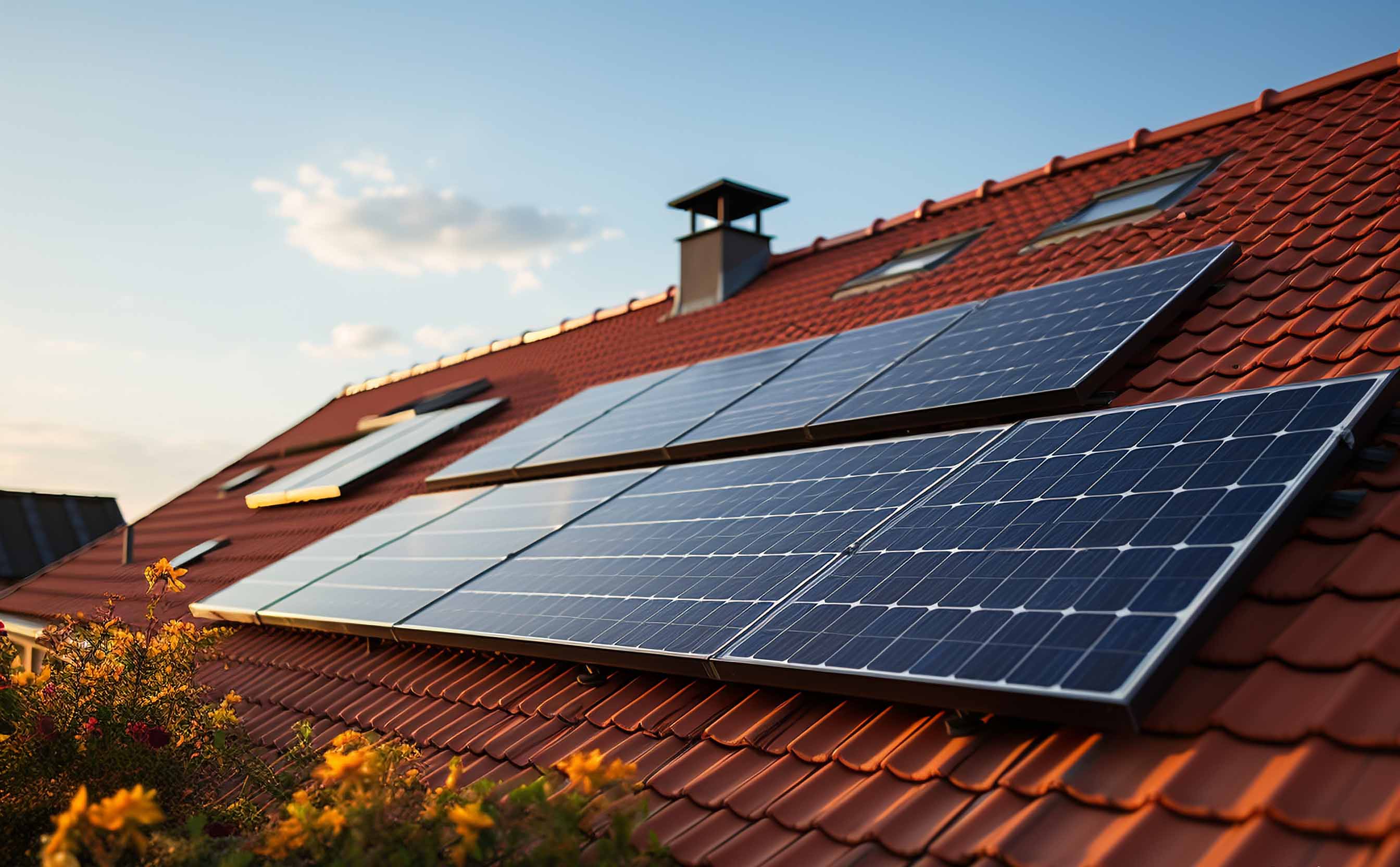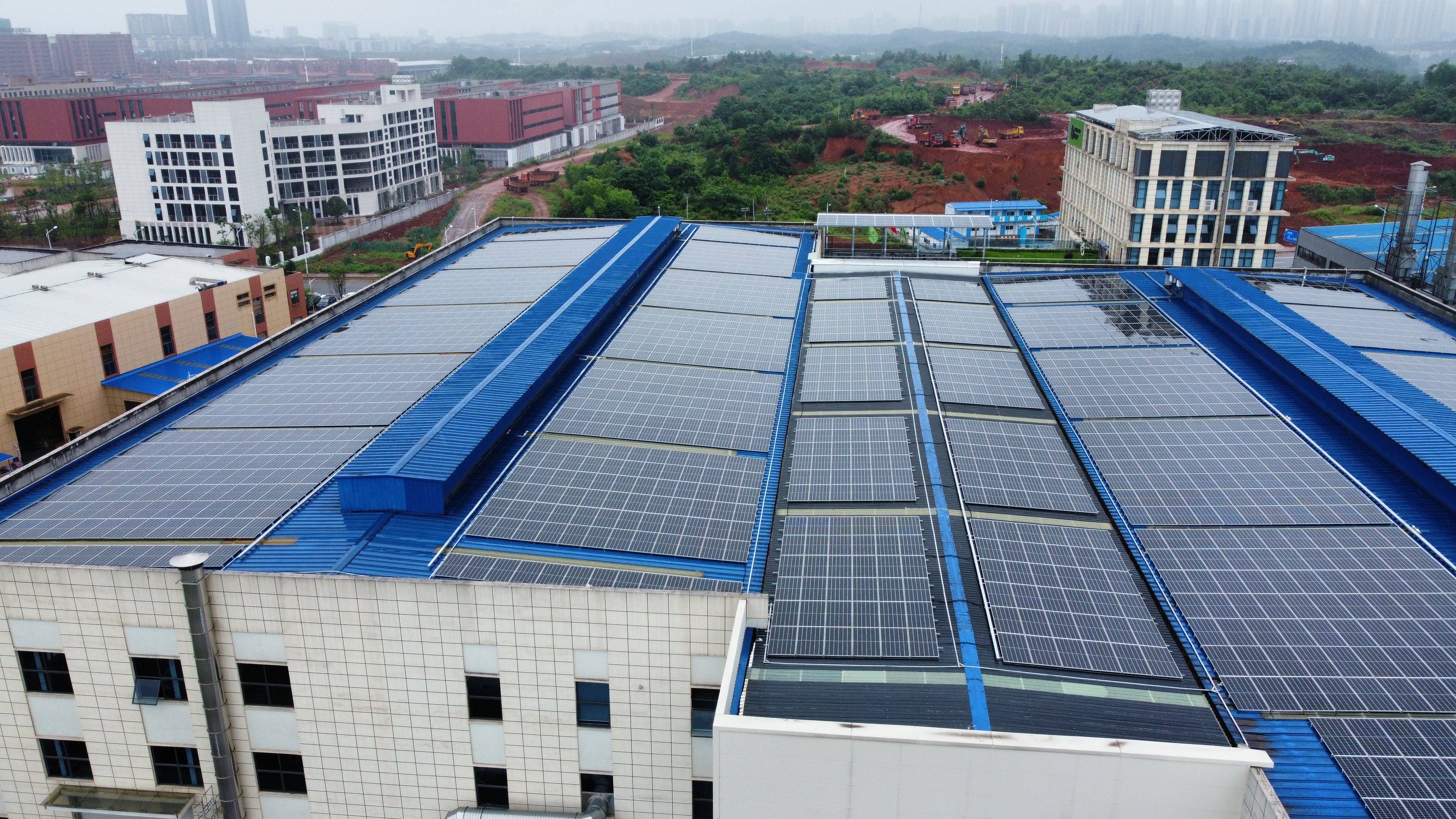The period from now until 2030 is a critical phase for China’s planning and construction of a new energy system and the establishment of a new power system. State Grid Corporation of China (SGCC) has been thoroughly implementing the new energy security strategy of the ”Four Revolutions and One Cooperation,” accelerating high-quality grid development, and steadfastly serving as the main force in building the new power system. The company is fully committed to supporting the high-quality development of new energy and promoting the green and low-carbon transformation of the energy sector. In the first half of the year, SGCC expedited the construction of new energy transmission channels, strengthened the development of supporting grid connection projects, actively facilitated inter-provincial power trading, and achieved a newly installed capacity of 203 million kW for wind and solar energy in its operating regions, marking a year-on-year increase of 108.7%.

Enhancing Grid Active Support Capability
The energy transition is surging with ”green” momentum. In the first half of the year, the Longdong–Shandong, Ningxia–Hunan, and Hami–Chongqing ultra-high-voltage direct current (UHVDC) projects were successively put into operation, further enhancing cross-regional resource allocation capabilities and strongly supporting the transmission and consumption of new energy from resource-rich western regions.
On June 29, Ningxia’s third major power transmission channel—the Ningxia–Hunan ±800 kV UHVDC project—achieved bipolar low-end power transmission. The project supports a total installed capacity of 17.64 million kW, including 13 million kW of new energy, with new energy accounting for over 50% of the transmitted power.
On June 10, the Hami–Chongqing ±800 kV UHVDC project commenced operation. The project integrates 10.2 million kW of supporting power sources, including wind, solar, and solar thermal energy, with new energy accounting for over 70% of the total. It will transmit more than 36 billion kWh of clean electricity annually to Chongqing. In eastern Gansu, clean energy-generated power is delivered directly to Shandong via the Longdong–Shandong ±800 kV UHVDC project. The project supports up to 14.5 million kW of power sources, including 10.5 million kW of new energy, and for the first time, includes 1.05 million kW of energy storage at the sending end, enabling bundled transmission of wind, solar, and thermal power for multi-energy complementarity.
Across the country, the ”green share” of energy continues to rise. By the end of June, Gansu’s total installed power capacity reached 109.7648 million kW, with new energy exceeding 72 million kW, accounting for 65.64% of the total. In Jibei, new energy installed capacity hit 77.648 million kW, representing 74.9% of the total power capacity—the highest proportion nationwide. Ningxia’s new energy installed capacity reached 49.533 million kW, accounting for 59.5% of its total power capacity, making new energy the largest power source in the region.
The randomness, volatility, and intermittency of new energy generation pose challenges to grid integration. SGCC accurately grasps the five key characteristics and objectives of the new power system, driving green transformation through technological innovation. The company continues to increase R&D investment in the new energy sector, serving as the main force in building the new power system.
State Grid Jibei Electric Power has promoted the transition of new energy generation from passive grid tracking to active grid support through comprehensive innovation in ”technology R&D, experimental verification, and engineering demonstration.” State Grid Fujian Electric Power has delivered achievements in offshore wind power transmission and consumption, new distribution networks and microgrid construction, and digital technology applications. State Grid Xinjiang Electric Power has advanced the construction of the Southern Xinjiang New Power System Demonstration Zone, collaborating with power generation companies on grid-forming new energy technology breakthroughs. Continuous breakthroughs in core technologies and the gradual improvement of a grid management system spanning all aspects of the new power system are facilitating large-scale new energy development and high-level integration.

Supporting New Energy Grid Connection and Transmission
In the first half of the year, SGCC actively promoted the planning and construction of new energy-supporting transmission channels, continuously optimized grid structures, enhanced transmission capacity, and improved regional power supply reliability, providing robust support for new energy projects to ”generate, transmit, and utilize power effectively.”
On July 4, in Houqin Village, Zhengzhai Town, Lingcheng District, Dezhou, Shandong, rows of photovoltaic panels were neatly arranged on a lake surface. Zhang Hu, an employee of State Grid Dezhou Power Supply Company, and his colleagues were inspecting the station’s control equipment and lines. The photovoltaic station has a total installed capacity of 420 MW, providing approximately 420 million kWh of clean electricity annually.
In recent years, State Grid Shandong Electric Power has accelerated the construction of a new energy system, creating a demonstration zone for green and low-carbon energy transformation. In the integrated wind-solar-storage base on the saline-alkali lands of northern Shandong, the company has improved the 500 kV grid structure, constructed 500 kV new energy aggregation projects in Weifang, Binzhou, and Dongping, and accelerated the formation of a ”north-to-south” power transmission channel within the province, turning once-barren land into a ”green” energy hub.
In Xianning, Hubei, rolling hills and intense sunlight provide an ideal setting for the country’s largest mountainous flexible-structure photovoltaic project—the Huaneng Tongshan Nanlin Photovoltaic Complex. Thousands of deep-blue photovoltaic panels are layered across the terrain.
To promote local consumption of new energy, State Grid Hubei Electric Power launched a new energy dispatching system that employs cloud computing to formulate optimal control strategies, addressing challenges in aggregating, monitoring, forecasting, analyzing, and dispatching source-grid-load-storage resources. The system has integrated 378 new energy stations in northern Hubei, covering wind, solar, and energy storage projects of 10 kV and above.
By the end of June, Jiangsu’s new energy installed capacity reached 110 million kW, including 59.457 million kW of distributed photovoltaic capacity. State Grid Jiangsu Electric Power has continued to develop a distributed photovoltaic resource development and allocation platform, strengthening the distribution network in advance to ensure ”full access” for distributed new energy. Pilot projects using technologies such as integrated solar-storage grid-forming and millisecond-level rapid power control have effectively improved local balance rates for new energy.
Gansu boasts abundant wind and solar resources. State Grid Gansu Electric Power has focused on tackling key technologies for new energy integration and grid stability control, developing a comprehensive defense system that integrates panoramic monitoring, multi-resource coordination, and online early warning decision-making. The system enables millisecond-level state perception and precise control of new energy, covering multiple substations and new energy stations, including the Qishao DC converter station, with 60 million kW of integrated new energy capacity. It has also been applied in Shaanxi, Xinjiang, Ningxia, and other regions.

Tapping the Potential of Power Market Trading
The power market, as an ”invisible hand,” has become a vital tool for optimizing national power resource allocation. In the first half of the year, SGCC actively promoted the construction of a unified national power market, expanded green power and certificate trading, and developed market mechanisms suited to high-proportion new energy integration, continuously opening new pathways for new energy transmission and consumption.
From January to June, Zhejiang Electric Power Trading Center organized 15 inter-provincial green power trading sessions through monthly and intra-month centralized bidding, achieving a total transaction volume of 1.382 billion kWh, a 154% increase compared to the full year of 2024.
To advance inter-provincial green power trading, State Grid Zhejiang Electric Power has tapped into off-peak consumption potential, facilitating the delivery of 450 million kWh of green power from Inner Mongolia and Heilongjiang during late-night and midday off-peak periods. This supports Zhejiang’s green and low-carbon development while enhancing the green competitiveness of export-oriented enterprises. The company is also formulating plans to expand Zhejiang’s 2025 green power scale to meet market demand.
State Grid Shanxi Electric Power has leveraged coordinated efforts in provincial and inter-provincial spot power markets to boost new energy consumption and optimize resource allocation. ”Continuous power trading from June to November is underway, allowing market participants to lock in prices six months in advance,” said Gong Jianhua, Director of Trading at Shanxi Electric Power Trading Center. From January to June, Shanxi transacted 1.363 billion kWh of electricity through inter-provincial spot market trading, covering 25 provinces.
On June 27, Zhai Chengda, a customer manager at State Grid Hefei Power Supply Company’s Energy Service Technology Center, used the Hefei Virtual Power Plant to list green power generated by Anhui Hemei Materials Technology Co., Ltd.’s photovoltaic station from July 8 to 14 for trading. The transaction was completed at 10 a.m. that day, with a volume of 1,000 kWh.
“In March, the Hefei Virtual Power Plant and the Anhui Power Trading Platform system interconnected, qualifying for green power trading,” Zhai explained. State Grid Anhui Electric Power has innovated in distributed aggregation for market participation, proposing a model where virtual power plants act as energy aggregators to represent distributed resources in the market. This promotes a ”distributed-aggregator-retailer-user” trading model spanning wholesale and retail markets, with mechanisms for registration, trading, and settlement. By the end of June, five virtual power plants had facilitated the participation of 25 distributed photovoltaic aggregations in Anhui’s green power trading, totaling 51.653 million kWh.
Multifit is a national high-tech enterprise dedicated to the R&D, production, sales, and construction of solar power generation and other green energy solutions, as well as PV power station cleaning and O&M services. Headquartered in Beijing, the company has a production base in Shantou National High-Tech Industrial Development Zone, Guangdong, and a branch in Shenzhen.
The company specializes in the technical development, production, sales, and system integration of solar cleaning robots and supporting equipment, PV inverters, portable solar power stations, MPPT solar charge controllers, and solar LED street lighting systems and related products. It also engages in the design, development, investment, and construction of solar power generation systems and electrical automation projects, along with PV power station cleaning and O&M services.
Post time: Jul-17-2025


